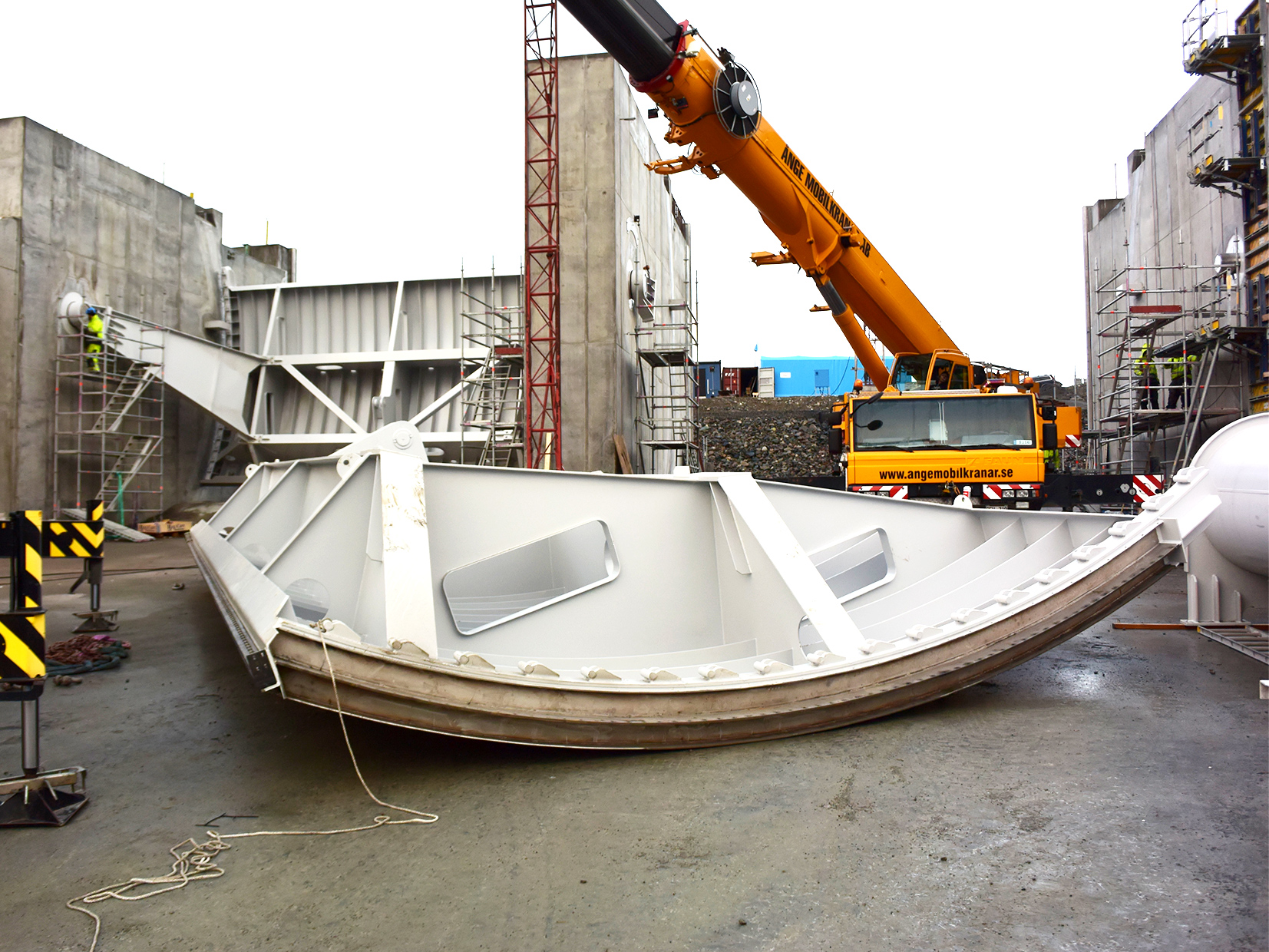Lean duplex stainless steel helps the hydropower industry solve corrosion and operational challenges
Hydropower is vital to the Swedish economy as it produces around 45% of the country’s electricity, so ensuring the safety and reliability of the dams that serve the generating turbines is crucial. A particularly important plant is the 156 megawatt (MW) Långå hydroelectric station served by the Loosen dam, situated in Härjedalen in the middle-west of Sweden along the tributaries of the river Ljusnan.
The Lossen dam was built in 1959-1962 and is 1,600 m long with a maximum reservoir capacity of 500 million m3. A breach of this dam would have major consequences for the downstream area, since it would cause secondary dam failures on all dams down to the Baltic Sea.
To avoid potential loss of life and the impact on the Swedish economy, the Lossen dam has been the subject of a major upgrading and improvement program. This included two hydraulically-operated emergency flood gates, installed upstream in 2016, which is where Outokumpu’s lean duplex stainless steel comes in.

The installation of the flood gates in 2016
Weight saving gives a lift
A major challenge facing the designers of the emergency flood gates was to get the weight down so that they could be operated by the hydraulic system. The advantage of duplex stainless steel is that it has a higher strength than conventional constructional steel and no corrosion allowance is needed. A lean duplex stainless steel features lower amounts of expensive alloying elements, such as nickel and molybdenum, providing an especially cost-effective solution. So, by specifying Outokumpu Forta LDX 2101 it was possible to reduce the wall thickness by over 30%, with a corresponding and very significant saving in weight.
A two-sided story
The water side of the flood gates is manufactured in Forta LDX 2101, while the dry side, where corrosion resistance is less important, is in painted carbon steel. A special dissimilar welding procedure was used to join the carbon steel stiffeners and structure to the duplex stainless steel plate.

The downstream side of a flood gate with the painted carbon steel structure welded to the duplex stainless steel.
Facing up to surface damage
Another important reason for selecting stainless steel was that the gates are very bulky, meaning they had to be transported with the water side facing the trailer floor. This would have caused significant damage to any coating, so a further coating would have been needed on site. The fabricator estimated the cost for on-site coating to be far more expensive than selecting stainless steel, in a range of Euro 200-300k.
In contrast, even if the stainless steel surface is scratched it benefits from the self-healing properties of the microscopically thin chromium oxide that forms immediately. This ensures continuous protection against corrosion, so there was no issue in handling the transportation of the gates compared to coated carbon steel.

Craning a flood gate into position.
Time for hydropower plant designers to think again about stainless steel
Typically, stainless steel isn’t selected for this type of applications, since the corrosion issues aren’t considered to be that severe. But when a designer considers the whole lifetime of the plant, including all aspects of fabrication, operations and future maintenance costs, then stainless steel quickly becomes a competitive option.
The key benefits are:
- No future inspection and maintenance for coated steel. With the potential for costly downtime
- No coating step to be carried out in a dedicated facility optimized for painting operations
- No need for the time-consuming surface preparation before painting
- No need to design and fabricate a coating friendly structure (i.e. drainage, rounded corners)
- No need for including an additional margin to the thickness to compensate for any corrosion that can potentially occur during its service life
- A more sustainable approach in terms of recyclability and no micro plastic waste
All of this showing that sustainable duplex stainless steel often is the long term winning solution in water engineering applications.
